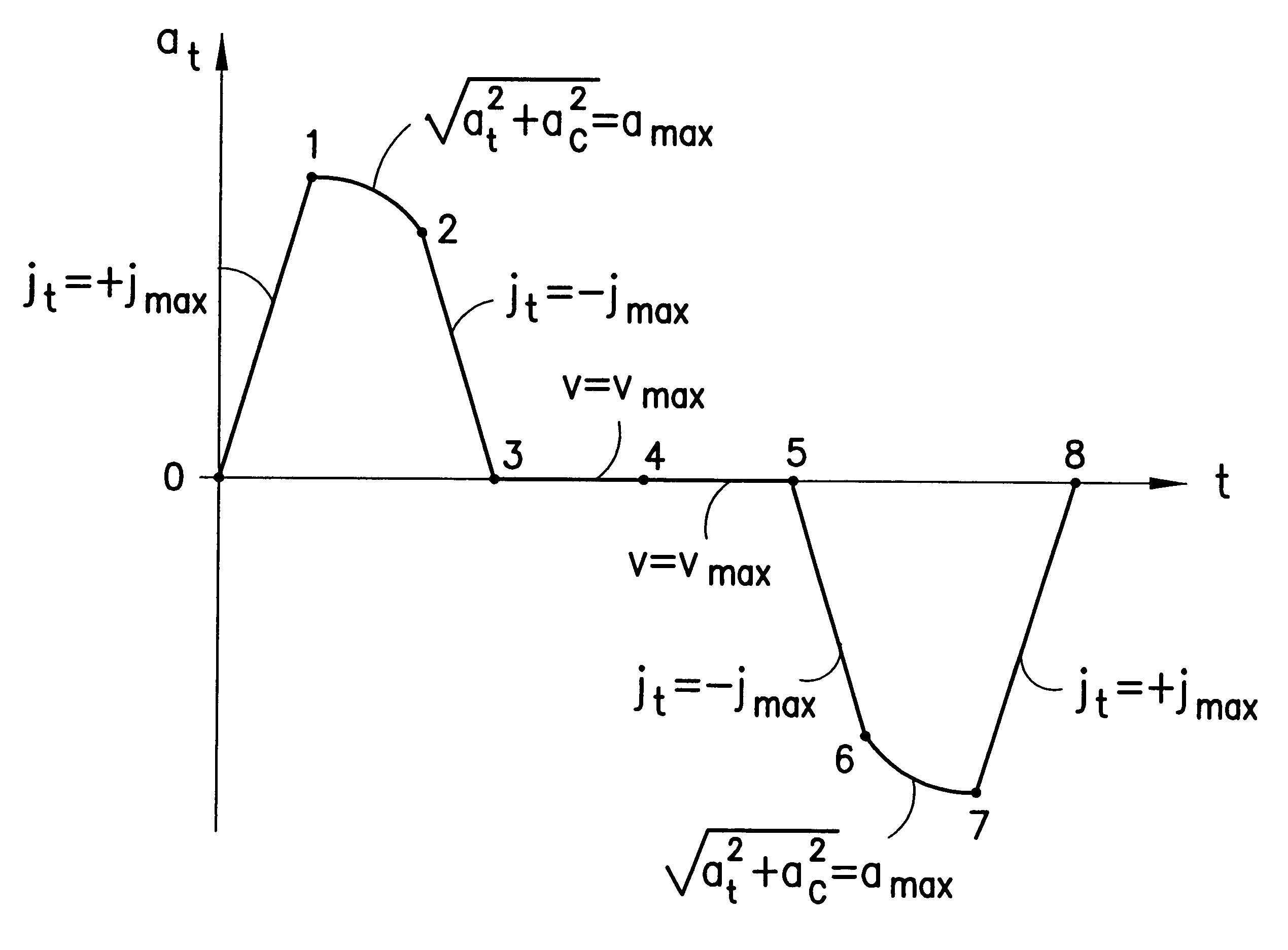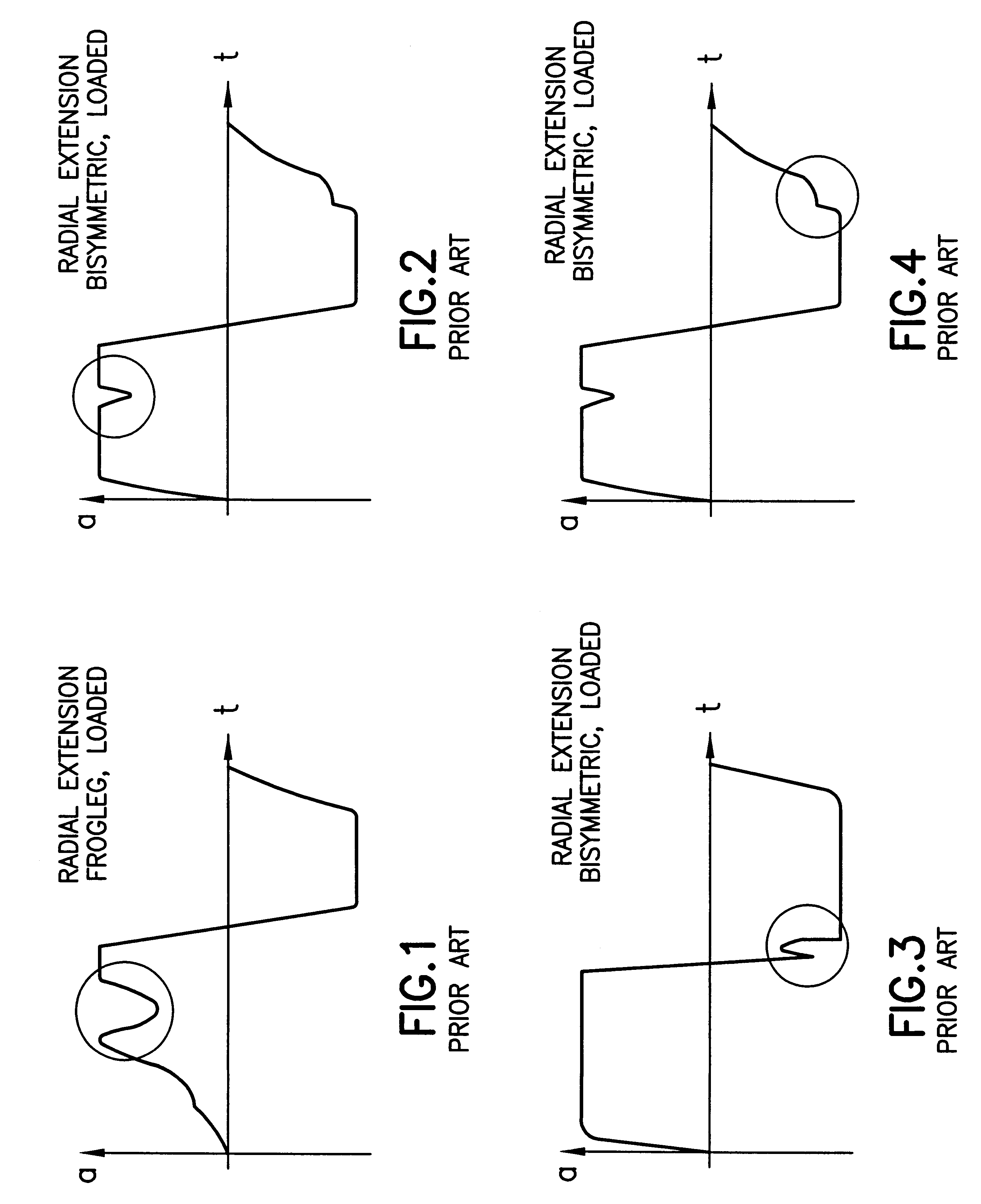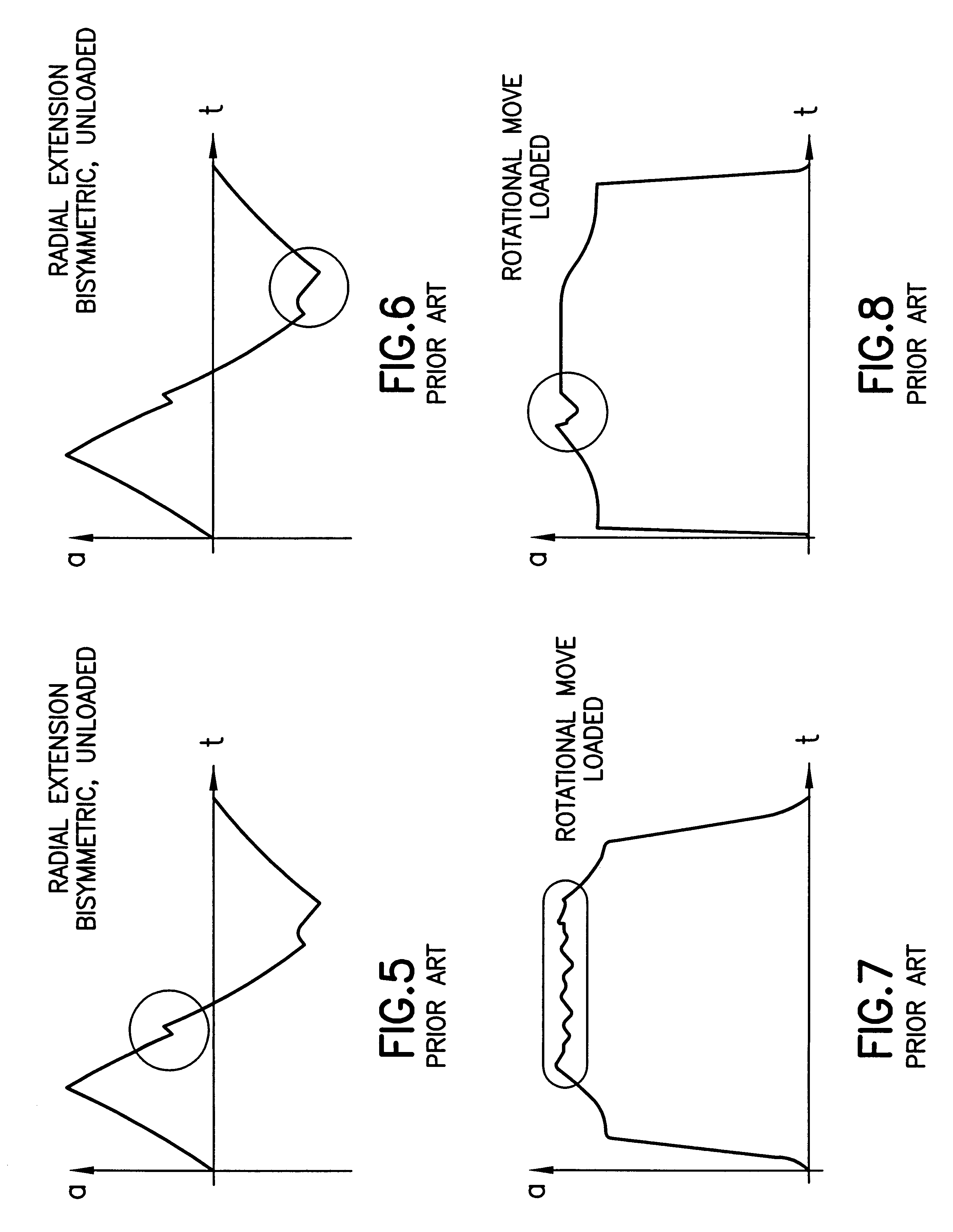System of trajectory planning for robotic manipulators based on pre-defined time-optimum trajectory shapes
a robotic manipulator and trajectory planning technology, applied in the field of robotic manipulators, can solve the problems of limited transfer time, fraught problems, and additional constraints, such as limited velocity and jerk, to achieve the effect of generating the known multi-arm robotic manipulator, and avoiding the effect of jerking
- Summary
- Abstract
- Description
- Claims
- Application Information
AI Technical Summary
Benefits of technology
Problems solved by technology
Method used
Image
Examples
example 2
tions that must be satisfied for the shape in FIG. 19, i.e., the simplest shape for a straight-line move, are:
max .vertline.j.vertline..ltoreq.j.sub.max and max .vertline.a.vertline..ltoreq.a.sub.max and t.epsilon.(t.sub.0, t.sub.2) t.epsilon.(t.sub.0, t.sub.2) max .vertline.v.vertline..ltoreq.v.sub.max t.epsilon.(t.sub.0, t.sub.2).
Trajectories generated by the method of the invention are completely defined by a set of nodal points which typically may include time, position, velocity, acceleration, jerk, and jerk rate. The corresponding position, velocity, and acceleration profiles are constructed from the nodal points using the set of equations associated with the selected trajectory shape.
The generic trajectory shapes for the basic categories of moves, their mathematical description, and the depiction of the associated fundamental shapes will now be described.
Single-arm Robot Move Along a Stright Line
To begin with, a move of a single-arm robot along a straight line in accordance w...
case 1
Amax.ltoreq.a.sub.Bmax ; and
Case 2: a.sub.Amax >a.sub.Bmax.
Since acceleration of end effector B never violates a.sub.Amax during radial moves for the known designs of dual-arm frog-leg robots, the acceleration limit a.sub.Bmax never becomes active when a.sub.Amax.ltoreq.a.sub.Bmax. Consequently, the same trajectory shapes can be used in Case 1 as for a straight-line move of a single-arm robot as described above.
The generic trajectory shape for Case 2 is depicted in FIG. 35. It is composed of 7 segments:
Segment 0-1: j.sub.A =+j.sub.Amax
Segment 1-2: a.sub.B =-a.sub.Bmax
Segment 2-3: j.sub.A =+j.sub.Amax
Segment 3-4: a.sub.A =a.sub.Alim
Segment 4-5: j.sub.A =-j.sub.Amax
Segment 5-6: a.sub.A =-a.sub.Amax
Segment 6-7: j.sub.A =+j.sub.Amax
At the cost of a slight deviation from the optimum solution, the value of a.sub.Alim is selected so that max(a.sub.B)=+a.sub.Bmax. Due to this simplification the number of necessary fundamental trajectory shapes is reduced substantially. The position, velocit...
PUM
 Login to View More
Login to View More Abstract
Description
Claims
Application Information
 Login to View More
Login to View More - R&D
- Intellectual Property
- Life Sciences
- Materials
- Tech Scout
- Unparalleled Data Quality
- Higher Quality Content
- 60% Fewer Hallucinations
Browse by: Latest US Patents, China's latest patents, Technical Efficacy Thesaurus, Application Domain, Technology Topic, Popular Technical Reports.
© 2025 PatSnap. All rights reserved.Legal|Privacy policy|Modern Slavery Act Transparency Statement|Sitemap|About US| Contact US: help@patsnap.com



